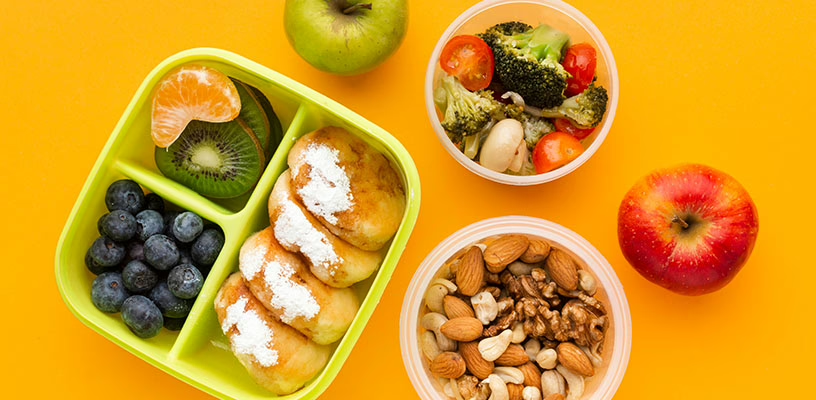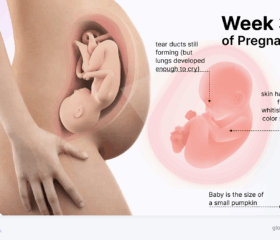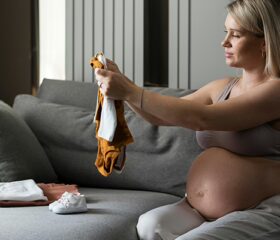Fueling Up for Labor: What You Need to Know About Eating and Drinking During Childbirth
Many people compare labor to running a marathon—a physically demanding event that takes stamina and endurance. Just like with a marathon, you’ll need plenty of energy to get through it.

For a long time, the standard practice was to avoid eating or drinking during labor, limiting you to ice chips and water and very little in the way of fuel. However, in recent years, these guidelines have shifted.
Can you eat during labor?
Yes—although the old guidelines advised against eating while in labor, it’s generally safe to do so. In fact, eating during labor has a host of benefits, including:
- Sustained energy: Labor lasts an average of 12–24 hours for first-time births and 8–10 hours for subsequent births. 1 If you can replenish your energy during it, it’s well worth doing so.
- Shorter labor: Some studies suggest that fasting triggers a stress response, diverting blood flow away from your uterus and slowing labor progression. 2 The obvious corollary is that if you eat, you might get through the whole thing faster.
- Prevention of ketosis: When you don’t eat, your body starts to break down your fat for energy, leading to ketosis, which increases blood acidity and may also stall labor. 3
Managing your hunger, thirst, and fatigue will also do a lot to keep you comfortable. Giving birth is stressful enough already—there’s no reason to make it worse by abstaining from food if you’re hungry.
Why was fasting recommended before?
The “no eating during labor” rule was initially based on research from the mid-20th century. In 1946, Dr. Curtis Mendelson conducted a study that linked aspiration during childbirth with serious complications. 4 At the time, general anesthesia was commonly used during deliveries, so aspiration was a significant concern.
Pregnancy-related hormonal changes, including increased progesterone levels and the pressure of your growing uterus, slow down digestion, and your relaxed stomach muscles further increase the risk of aspiration. 5 As a result, fasting before labor became standard practice, with the belief that an empty stomach was necessary to minimize the chance of complications if emergency anesthesia was needed.
How have the recommendations changed?
General anesthesia is now rarely used for vaginal births or even C-sections, with regional anesthesia (such as epidurals and spinal blocks) used instead for modern-day labor and delivery. 6 These techniques allow you to remain conscious, significantly reducing the likelihood of aspiration while still numbing the pain of childbirth.
Aspiration during delivery is rare today, particularly in low-risk, healthy moms. A study examining labor cases between 2005 and 2013 found only one documented case of aspiration in the US, and that patient had a high-risk pregnancy. 2
What to eat and drink during labor
While eating during labor has benefits, you’ll need to stick to easily digestible foods and clear liquids. If your doctor gives the green light, here are some safe and nourishing options: 7
Liquids
- Water: Staying hydrated is paramount, though you should only take in moderate amounts of liquids during labor.
- Clear broth: Clear broths are warm, easy to digest, and give you plenty of nutrients.
- Fruit juice: Pulp-free juice gives you a quick energy boost.
- Electrolyte drinks: Coconut water or low-sugar sports drinks can help replenish minerals lost during exertion.
- Ice chips: This is the classic labor snack. Even when eating’s on the table, some women find that all they can stomach are ice chips.
- Tea: Herbal teas (like ginger or chamomile) can be soothing and help with nausea.
Light snacks
- Toast: Toast, either plain or with a little jam, is a simple carb source that’ll give you sustained energy. It’s also a good option if your tummy is giving you trouble.
- Plain pasta: Plain pasta is easy to digest and provides you with energizing carbohydrates (although you might want to skip the sauce just this once).
- Granola bars: These are great bite-sized snacks for the marathon of pregnancy. Granola bars are quick to consume and give you a good mix of protein, fiber, and carbohydrates.
- Applesauce or Jell-O: These are similarly light, quick energy sources that are easy to eat.
- Popsicles or sorbets: These are more like dessert than snacks, but if there was ever a time to let yourself indulge, this is it. They’re hydrating and refreshing, will give you a quick energy fix, and are a little more flavorful than plain old ice chips.
You can keep a list of your food and drink preferences in your birth plan, whether you write it out in your journal or use a template in a pregnancy tracker app.
What not to eat during labor
As comforting as a cheeseburger might seem, you should stick to light meals while in labor. 7 Avoid heavy, greasy, high-fiber, dairy-based, or acidic foods, since they may be harder to digest and can make you queasy, which is the last thing you want when you’re giving birth.
When should you avoid eating during labor?
While eating is safe and beneficial for most mothers, there are situations where your doctor may recommend that you keep your stomach empty:
- High-risk pregnancies: Conditions like preeclampsia, eclampsia, or gestational diabetes may warrant laying off the snacks for the duration of your labor. 8
- Planned C-sections: If you have a C-section scheduled, you’ll likely need to fast beforehand. 9
- Increased risk of emergency C-section: You may not be allowed to eat if your doctor thinks a C-section is likely to be necessary due to how your pregnancy is developing. 10 Similarly, if you’ve had a prior cesarean, your doctor may limit your food intake. 10
- Multiple births: Having twins (or triplets, or more!) increases the likelihood of surgical intervention, so your doctor might recommend that you fast. 11
- Use of opioids: Opioid-based pain management can keep your stomach from emptying as fast, increasing your risk of aspiration. 12
Aside from these scenarios, your hospital may have its own policies on eating. Talk over your birth plan with your doctor before the big day rolls around to make sure eating during labor is safe for you and your baby.
If your hospital doesn’t allow you to eat during labor, don’t try the clandestine approach. It’s essential for your doctor to know what’s in your stomach in case any complications arise.
What if you don’t want to eat during labor?
There’s no rule that says you have to eat during labor, and if you’re suffering from nausea or the pain of childbirth is getting overwhelming, food may be the last thing on your mind.
Listen to your body—if you don’t feel like eating, don’t force it. Your doctor or midwife will keep a close eye on you throughout labor, and they’ll make sure you’re sufficiently energized and hydrated, one way or another.
Final thoughts
As the guidelines around eating and drinking during labor have evolved, many doctors are moving away from outdated rules on fasting. For most healthy, low-risk pregnancies, consuming light meals and clear liquids is safe and healthy.
With all that said, every pregnancy and labor experience is unique, so chat about your medical history and risks with your doctor or certified nurse midwife.
Article Sources
- University of Rochester Medical Center. "Labor" Retrieved August 21, 2025.
- American Society of Anesthesiologists. "Most healthy women would benefit from light meal during labor" Retrieved August 21, 2025.
- Cochrane Database of Systematic Reviews. "Interventions for ketosis during labour" Retrieved August 21, 2025.
- StatPearls. "Mendelson Syndrome" Retrieved August 21, 2025.
- American Society of Anesthesiologists. "Statement on Oral Intake During Labor" Retrieved August 21, 2025.
- MedlinePlus. "Anesthesia" Retrieved August 21, 2025.
- UT Southwestern Medical Center. "Hungry during labor? Women may now get more than ice chips" Retrieved August 21, 2025.
- MedlinePlus. "Health Problems in Pregnancy" Retrieved August 21, 2025.
- Nemours KidsHealth. "Cesarean Sections (C-Sections)" Retrieved August 21, 2025.
- Washington State Health Care Authority. "Improving Maternal & Neonatal Outcomes" Retrieved August 21, 2025.
- University of Rochester Medical Center. "When You Have a Multiple Pregnancy" Retrieved August 21, 2025.
- Office on Women's Health. "Labor and birth" Retrieved August 21, 2025.







